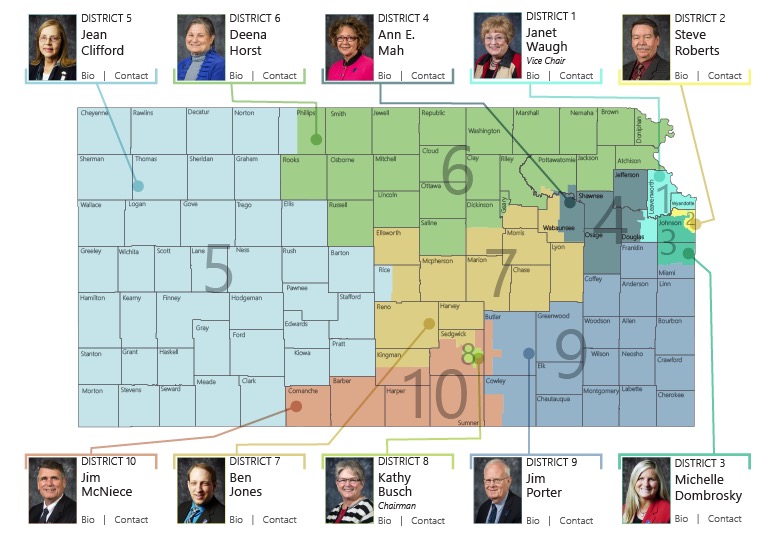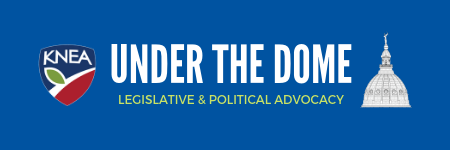This is a good question and one that bears consideration. We’ve been looking at the arguments of those opposed to the order and thought it would be worth taking the opportunity to consider them.
We must first remember that this is a pandemic – an event of dire importance and one that we expect to eventually end. This is not a business as usual issue which is why disaster or emergency declarations and executive orders are temporary measures. The declaration and orders are intended to help get out of the emergency as quickly as possible.
Argument No. 1 goes like this: “I support local control and this order just ends local control of our schools.” Does it?
First consider if local school districts now have unfettered local control. Do they have control over the number of days or hours of instruction? Do they have local control over every dollar that comes into the district? The answer to both these questions and many others on “local control” is NO. Local control has its limits. The state sets controls on many aspects of education. On the issue of hours of instruction, local control allows the district to exceed the state requirement but not go below it. Both the state and federal government put tight restrictions on how money can be used – just look at the results of the state’s audit of at-risk funding last year. Clearly the state is overruling local control in the use of those dollars.
On the issue of when school starts, the state has often tried to move the date, asserting that the legislature has the authority to do so. For a number of years in the not too distant past, there were bills introduced that would have mandated that schools opened after Labor Day. The legislature preferred the August opening date.
That being said, does delaying the start date actually strip districts of local control over their opening? Absolutely not. Each local district has complete control over how the district will reopen. Right now they are planning that opening using the guidance provided last week by the State Department of Education as approved by the State Board of Education. Each district will decide on its own how much face-to-face instruction will happen. Each district will decide how to meet the needs of children who won’t come into the building; they will decide how to achieve social distancing, how to transport children, how to handle meal times, how to manage sanitation, and many other important issues.
The only difference is that the state is saying we must wait until after Labor Day to start. This gives school districts more power of local control over opening in that they will have the time to thoroughly plan their reopening and to involve more constituency groups in that planning including teachers, support personnel, parents, community members and business leaders. Local control over reopening is actually enhanced with the additional time.
A second argument is that Kansans don’t like mandates, they prefer recommendations.
The truth is that Kansans live their lives under plenty of government mandates. If one follows this argument to its natural conclusion, we would put signs by stop lights that say, “It is recommended that you stop on red.” Should we consider making alcohol consumption a recommendation – “We recommend that persons under 21 should not consume alcohol.”
The legislature passes mandates to protect Kansans every year. It is a mandate that you stop on red because it saves lives. It is a mandate that you cannot smoke inside because second hand smoke harms the health of non-smokers. It is a mandate that one must be 21 to consume alcohol because there is a health risk that is better handled with maturity. When the health of Kansans is at risk, we enact mandates to protect the people.
At this time we need to face the sad truth that “recommendations” are harming us. The Centers for Disease Control (CDC) and the Kansas Department of Health and Environment (KDHE) tell us that wearing masks is an effective way to reduce the spread of the virus yet most counties have rejected a state mandate to wear masks in public. The result is that too many people are not wearing masks and spread of the virus in Kansas is out of control. The virus, once believed to be restricted to urban areas, has now spread to rural areas. The town of Logan in Phillips County has a severe outbreak that started in an assisted living facility where 35 residents were infected along with a number of staff members who are out in the community. While that may not sound like a lot, consider that 54 cases would be 10% of the people in Logan!
The same is happening in other areas that were not impacted in the early days of this crisis. Reno and McPherson counties that opted out of the mask mandate have now reversed course and adopted it. Why is that? Because recommending that people wear masks is not stopping the spread. A mandate has become necessary to protect the health of Kansans.
The third argument is that COVID-19 just doesn’t affect children.
There has been an idea from the start of the pandemic that the young were not impacted and that it was a crisis only for the elderly. This idea continues despite evidence that it is untrue.
In May, when it appeared that we had managed to reverse the spread of the virus, much of the country, including Kansas, began to reopen businesses and allow larger gatherings. People, particularly younger people, began to act as if the crisis was over. By Memorial Day, there were large gatherings at lakes, in parks, at homes, and in bars. And the virus took advantage. Cases have skyrocketed to levels far past those of March and April. And the important lesson learned is that the virus does not limit itself to the elderly.
More and more young adults and children are contracting the virus. Some are dying. Some are bringing the virus to their friends and relatives. As if to prove that the virus does not discriminate based on age, one community in Texas has now found 85 infants with the virus. COVID-19 attacks children and some of them are dying. This reality means that it can, and if we are not careful, will spread to our teachers and other school employees.
Finally, to the argument against the order from the other end of the spectrum – those who argue that schools should not reopen until the state experiences 14 days without a new case.
This sounds great. We hope that we will reach a point where we’ve reduced the spread such that we can go 14 days without a new case. But frankly, this is a scenario under which schools might not reopen all year. Even New Zealand, a country that has become the poster child for effectively eradicating the virus, finds new cases popping up now and again. The virus is likely never to be fully eradicated and even with the best efforts we will likely find cases coming up now and again. Despite great strides in science and immunology, we have still not entirely eradicated polio, chicken pox, or measles but we do have them under control. Just this month a Colorado squirrel was found to be carrying bubonic plague! We cannot count on complete eradication of COVID; we need to work to control it.
Kansas must get control!
We know that there are four things we must do if we hope to get COVID under control. We must wear masks in public. We must social distance. We must practice good hygiene, especially washing hands. We must avoid large gatherings.
If we all agree to do those four things, we can reduce the spread and control the virus until a vaccine becomes available.
School, as we have always known it, is a large gathering. We put 20 to 30 people in a small room and keep them there for six to seven hours each day, five days a week. But we know there are things we can do to reduce the spread of the virus and still provide an education to our students and protect both their health and the health of their teachers.
We can provide social distancing through a hybrid education plan that has half of our students working online from home while the other half are face-to-face with a teacher in the classroom. We can provide protective barriers between desks. We can acquire, distribute, and require masks in the buildings. We can plan for a safe reopening if we have the time and resources to do so. A delay in the start date will allow for planning; will allow for the needed materials to be purchased and received.
Kansas NEA strongly supports Governor Kelly’s Executive Order delaying the start of the school year until after Labor Day.
This delay will provide school districts time to plan a safe reopening with maximum input from school employees, parents, community members, and local businesses.
This delay will help schools acquire and distribute protective materials including masks, physical Plexiglas barriers, and sanitation products prior to reopening.
This delay will give the state time to reverse the current trend and bring the number of cases down.
Enacting this delay will increase that likelihood that once our schools reopen, they will stay open. We must avoid a roller coaster of openings and closings as the virus controls our actions. That would be bad for the education of our children and for the ability of businesses to get back to work building our economy.
CALL TO ACTION: Contact your Kansas State Board of Education member
We urge all Kansans who want to see schools open safely for our children, our teachers and administrators, our support personnel, and our communities to contact their state board of education member (members’ email addresses and phone numbers below the map) and urge him or her to support Governor Laura Kelly’s executive order to delay the start of the school year until after Labor Day.

Kansas State Board of Education Members’ Contact Information
District 1: Janet Waugh, Vice Chair (Kansas City, Kansas) jwaugh@ksde.org 913-620-5062
District 2: Steve Roberts (Overland Park) sroberts@ksde.org 913-302-8185
District 3: Michelle Dombrosky (Olathe) mdombrosky@ksde.org 913-782-1835
District 4: Ann Mah (Topeka) amah@ksde.org 785-231-0823
District 5: Jean Clifford (Garden City) jclifford@ksde.org 620-275-4317
District 6: Deena Horst (Salina) dhorst@ksde.org 785-827-8540
District 7: Ben Jones (Sterling) bjones@ksde.org 620-278-6063
District 8: Kathy Busch, Chair (Wichita) kbusch@ksde.org 316-682-5718
District 9: Jim Porter (Fredonia) jporter@ksde.org 316-617-6779
District 10: Jim McNiece (Wichita) jmcniece@ksde.org 316-729-9742


